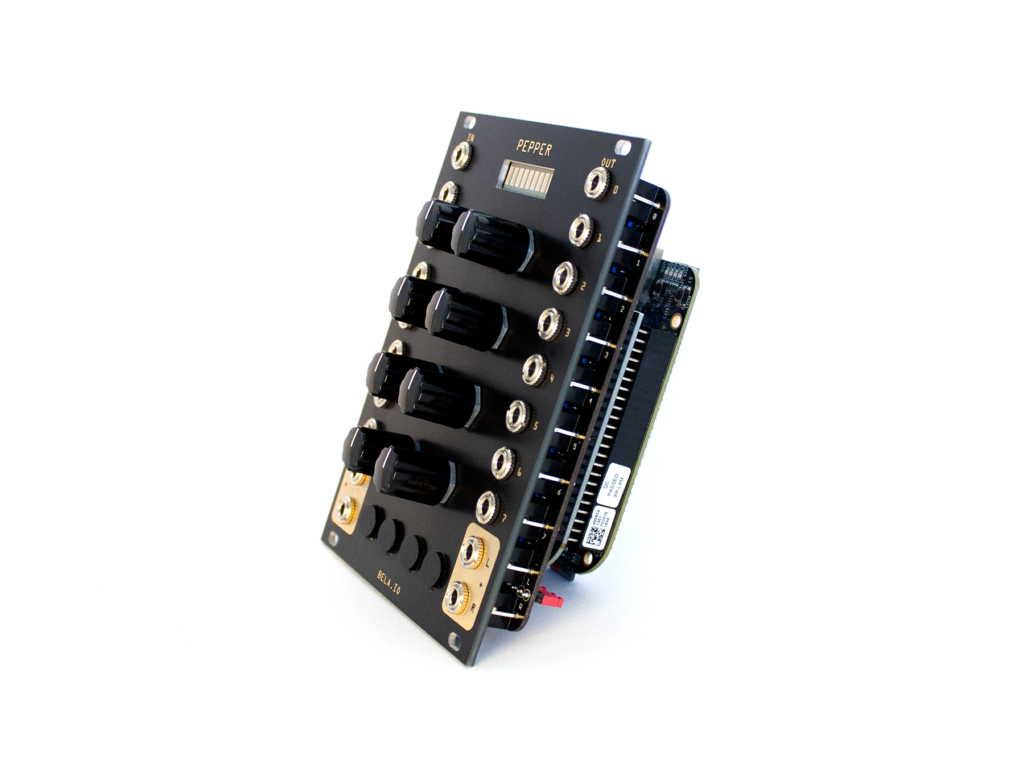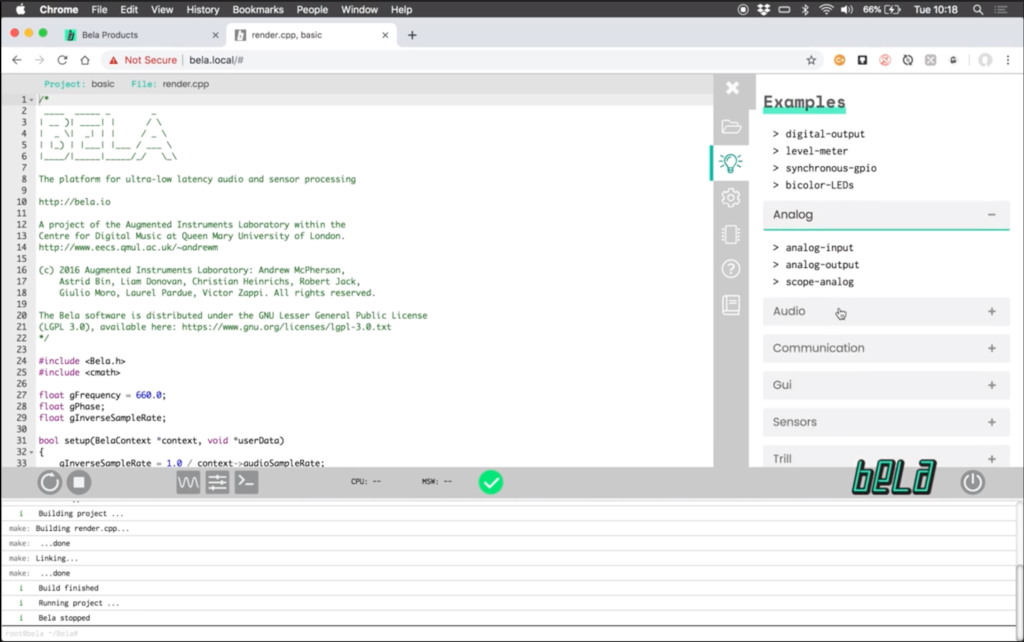The Bela Starter Kit comes with a Beaglebone and the extension of the Bela Cape which houses a myriad of IOs. This kit will connect to Bela Pepper which is a PCB with a matching Faceplate for integrating the Beaglebone into a modular system. The assembly of the PCB is described on Bela.io with an illustrated manual and a bill of materials to get for building the DIY kit. This will be my task on my days off in February.

Pepper will be an 18 HP Module that provides Stereo IO, 8CV IO, 8 CV offset potentiometers, 4 buttons, and 10 LEDs for the Beaglebone to connect to my modular. There is also a Faceplate for a USB breakout included.

To implement my code into the Beaglebone, on the different Belaboards is a Browser-based Integrated Development Environment (IDE). An IDE is a set of tools for a programmer to develop, test, and debug software. In the Bela IDE, one can program in C++, Pure Data, Supercollider, or Csound. It contains example code to work with and learn basic skills to use the Bela hardware. There is sample code in every language the Beaglebone can work with. Additionally, there is also a Pin Diagram which identifies all the pins that can be found on the respective board that one uses. In my case as said before it will be the Beaglebone. Further, there is a library of pre-coded functions in there which can be used.
